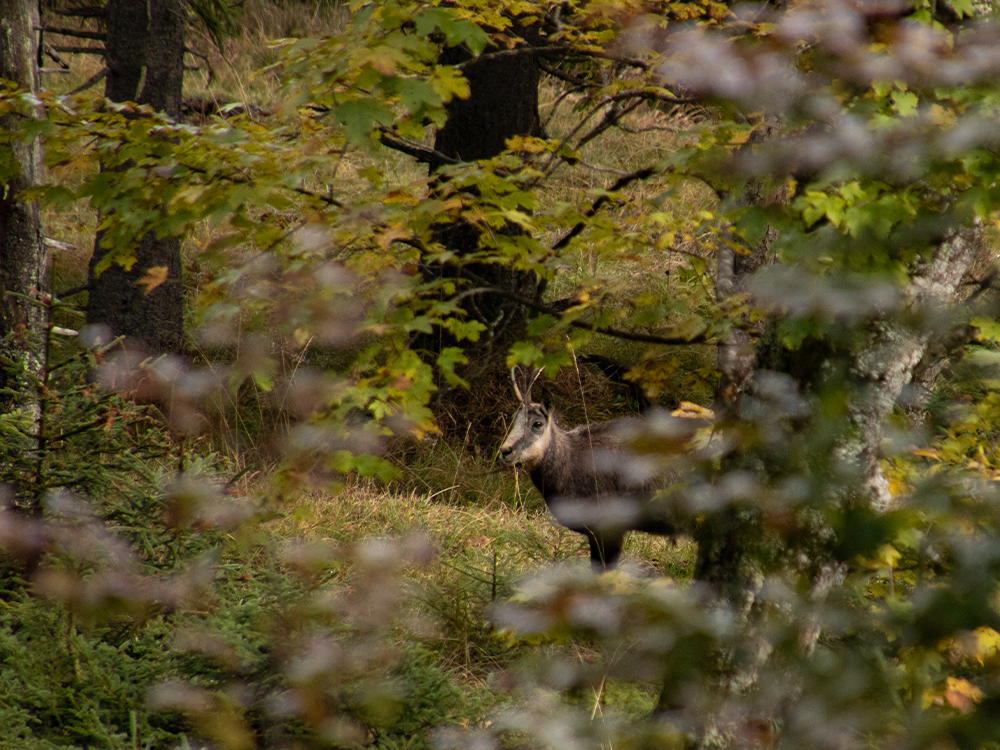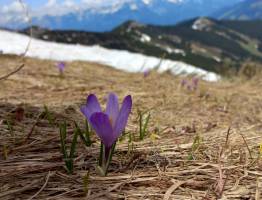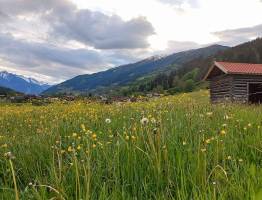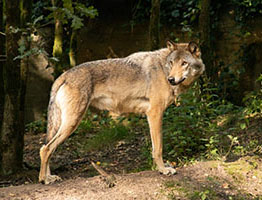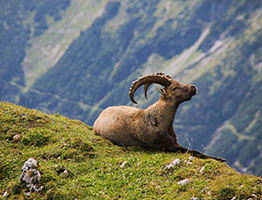How can you identify a chamois?
The chamois (Rupicapra rupicapra) is a true Alpine inhabitant, but slightly less well known than the ibex and the Alpine marmot. This mountain goat is an integral part of the Alps, but is seen less often than the magnificent ibex with its large, curved horns. Chamois are true artists at high altitudes and have a striking appearance that makes them easy to recognise. I saw one for the first time a few years ago. Just during a walk, among the trees. During the same holiday, I saw another one, but further away in an Alpine meadow. My heart leapt at this special encounter. Would you like to know how to recognise this beautiful Alpine animal? Then read on.
How do you recognise chamois?
The chamois resembles a goat, with short, dark, gracefully curved horns. In males, the tips of the horns are slightly more hooked than in females. They are easily recognisable by their white head with a dark stripe running from the ears, over the eyes, all the way to the nose. In summer, their coat is reddish brown, but in winter it turns dark brown to blackish brown. They have a dark stripe on their back from the neck to the tail, called the eel stripe. Chamois bleat and, when in danger, make a kind of whistling sound through their elongated nostrils.
Origin and lifestyle of the chamois
The chamois is descended from the Pachy gazelle and originates from the Himalayas. It came to Europe 300,000 years ago and there are now nine subspecies here.
Chamois are herbivores and their diet consists of grasses, herbs, buds, small shrubs, lichens and tree needles.
The does and their young live in herds of about 30 animals. The bucks live largely solitary lives, but join the herds in late autumn. This is also when the rutting season begins, during which the bucks can be seen fighting each other for the females. Mating takes place in late November and December. The gestation period is six months, after which usually one and very occasionally two kids are born. The kids are suckled for six months but remain with their mother for a year.
The difference between a chamois and an ibex
Some people find it difficult to tell the difference between a chamois and an ibex. They both live at high altitudes and are related to goats, but fortunately they are very easy to tell apart. Chamois often have darker fur than ibexes. In addition, the white face with a dark stripe across the eyes is a very recognisable feature of the chamois. Ibexes do not have this. Ibexes also have longer and thicker horns than chamois, often with large ridges on them. Chamois horns are smooth.
Habitat
Chamois live on rocky terrain, between 1,500 and 2,500 metres above sea level. They are true artists, moving along the steepest slopes as if it were nothing. This is partly due to their special, split hooves with a sharp outer edge. This allows them to fit their hooves into the narrowest rock crevices and spread them for extra grip. The centre of the underside of their hooves is rubbery and soft, allowing them to grip the ground like suction cups. This enables them to make large jumps and bridge height differences of up to 3 metres in one go.
Chamois have adapted to their environment
Not only have their hooves adapted to the rugged environment in which they live, but so has the rest of their body. There is less oxygen at high altitudes, but chamois have to perform at their best every time. For this reason, they have more red blood cells than deer that live lower down in the valley. The red blood cells are also a quarter smaller, so that together they have a larger surface area to absorb oxygen and can transport more oxygen through their bodies. In addition, they have a large heart with thicker, muscular ventricles. A pulse rate of 200 beats per minute during a sprint along the rocks is commonplace for chamois.
Chamois in winter
In autumn and winter, you are more likely to find chamois in lower-lying areas. Many chamois descend to the forests, because there is more food to be found there. However, not all chamois do this! In winter, many chamois climb even higher than in summer. This sounds contradictory, because the higher you go, the colder it is and the more snow there is. But higher up in the mountains, the wind blows harder, clearing the slopes and peaks and exposing food for the animals. They feed on lichens, among other things, which grow abundantly there.
Chamois are perfectly adapted to winter. They build up fat reserves and grow a long-haired winter coat, with a thick, woolly layer underneath. In the harsh winter, chamois switch to a lower energy level. By slowing down their metabolism, they consume less energy and can live off their fat reserves for weeks.
Dangers for chamois
The high altitudes are not without danger. Adult animals do not tend to have accidents, but a young, inexperienced animal may take a fatal misstep. In addition, golden eagles also prey on young chamois. These large birds of prey, with tremendous strength in their talons, can easily lift and carry off a lamb. Unfortunately, there are also diseases that can kill chamois, such as Gamsblindheit. This is an eye disease in which the cornea becomes inflamed. This causes the eyes to become cloudy and the chamois can become temporarily or even permanently blind. At high altitudes and on dangerous terrain, this is disastrous.
In addition to natural dangers, their numbers have also been reduced by humans. Hunting and sports and leisure activities have led to too many animals being shot and their peaceful habitat being disturbed. Fortunately, the chamois population in the Alpine countries is closely monitored and numbers are now stable.
Mountain goats can be found in all Alpine countries, you just have to look around carefully. The time I saw a chamois, I happened to be looking down into the forest and was suddenly met by a white face with a dark stripe across the eye. It was not a place where I expected to see chamois, but a few days later I saw another one. So keep your eyes open while hiking, especially in autumn! Now you know what they look like, and who knows, maybe you will also have an unforgettable encounter with a chamois.
Sources:
Der illustrierte Naturführer Alpen – Thomas Schauer, Claus & Stefan Caspari, Bayerischer Landwirtschaftsverlag, 2022
Die Natur der Alpen – Armin Landmann, Kosmos

